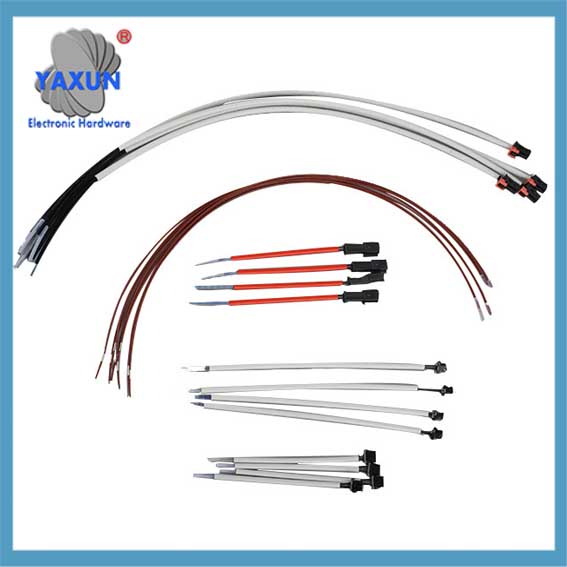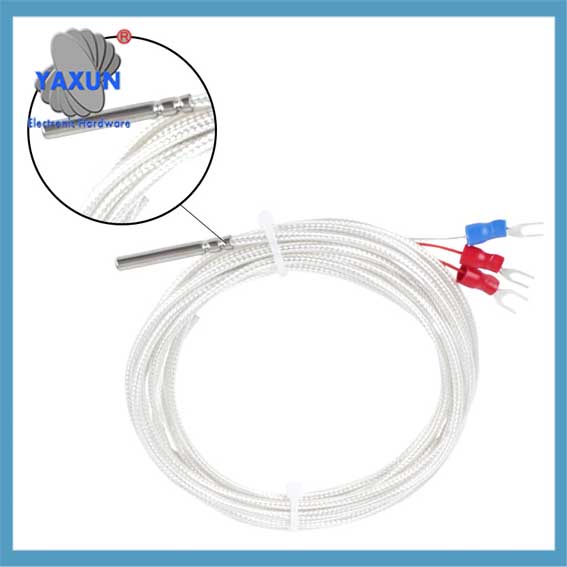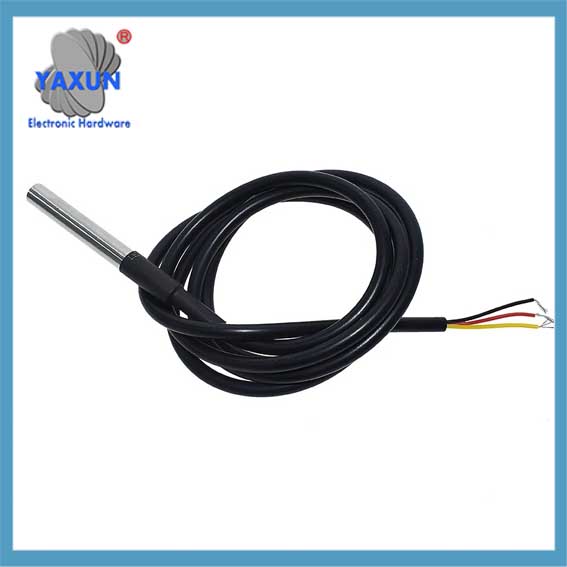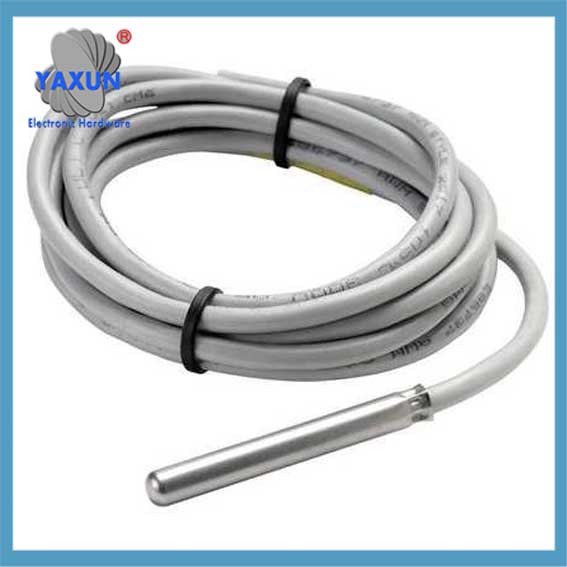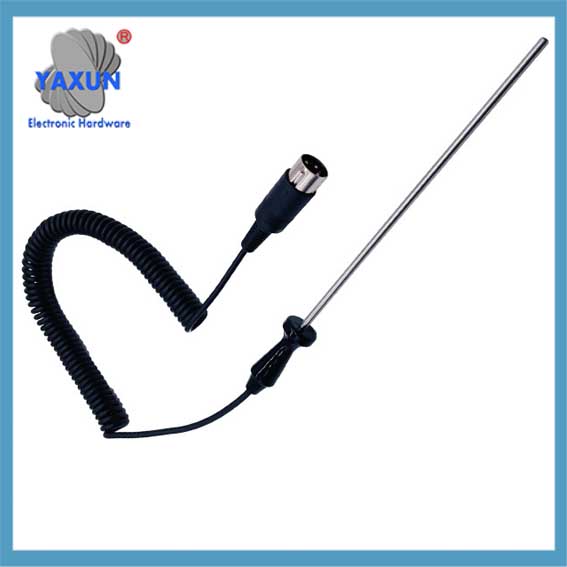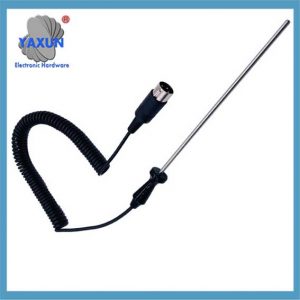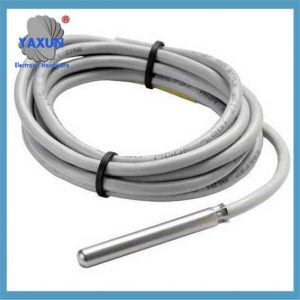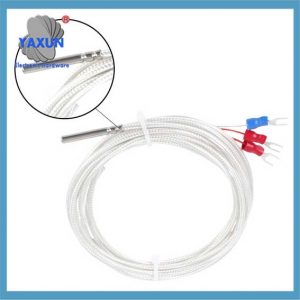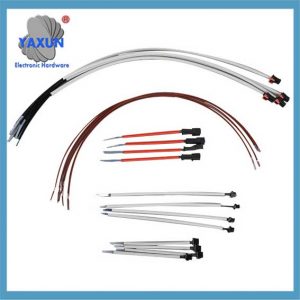Productcategorieën
- thermische zekering 32
- opbouwzekeringen 12
- thermistor 36
- PCB-gemonteerde zekeringhouder 27
- Kabelboom 6
- Blade-zekeringhouders 17
- thermostaat 50
- Elektrische zekering 24
- Automotive temperatuursensor 7
- Thermische stroomonderbreker 22
- Zekeringkast-houder 36
- Temperatuursensor 75
- Thermische schakelaar 68
- Auto zekering 20
- Zekeringen vastschroeven 8
Producttags
NTC, PTC, PT100, DS18B20 voor temperatuursondesensoren
Thermokoppel sonde: Het gebruikt het thermo -elektrische effect om de temperatuur te meten, en heeft de kenmerken van een breed meetbereik en snelle responssnelheid.
Thermische weerstandssonde: Gebruikt de eigenschap dat de weerstand van metaal- of halfgeleidermaterialen verandert met temperatuur om de temperatuur te meten, en heeft de kenmerken van een hoge meetnauwkeurigheid en goede stabiliteit.
Halfgeleidersonde: Gebruikt de eigenschap dat de geleidbaarheid van halfgeleidermaterialen verandert met temperatuur om de temperatuur te meten, en heeft de kenmerken van kleine maat, Lichtgewicht en een laag stroomverbruik.
NTC, PTC, PT100, DS18B20 Temperature probes and temperature sensors play an important role in the field of temperature measurement. The following is a detailed introduction to temperature probe sensors:
Er zijn veel soorten temperatuursensoren, inbegrepen:
Thermokoppels
These sensors are made of two dissimilar metals that connect at two points to form a junction. They are reliable, accurate, and can operate over a wide range of temperatures.
Weerstandstemperatuurdetectoren (RTD's)
These sensors are based on the change in resistance of a metal as the temperature changes.
Thermistors
These sensors use the temperature characteristics of semiconductor resistors, which change resistance as the temperature changes. Thermistors are sensitive and have high accuracy relative to their cost.
Negatieve temperatuurcoëfficiënt (NTC) thermistoren
These sensors are sensitive and can respond to very small temperature changes. They have a temperature range of -50 °C tot 250 °C.
Resistive temperature detectors
These sensors have positive temperature coefficients (PTC) and offer precise temperature measurements. Echter, they have poor sensitivity.
1. Definition and working principle
Temperature probe:
Definitie: A temperature probe is a device specifically used to measure temperature, and its core component is a temperature-sensitive element.
Working principle: A temperature probe uses sensitive elements (such as thermocouples, thermische weerstanden, halfgeleiders, enz.) to convert temperature changes into electrical signals for subsequent circuit processing or display.
Temperature sensor:
Definitie: A temperature sensor is a broader concept that includes a temperature probe and a signal processing circuit connected to it.
Working principle: A temperature sensor not only includes a sensitive element, but also has a signal processing circuit that can complete the acquisition, verwerking en uitvoer van temperatuursignalen, usually in the form of digital or analog signals.
2. Types and characteristics
Temperature probe type:
Thermokoppel sonde: Het gebruikt het thermo -elektrische effect om de temperatuur te meten, en heeft de kenmerken van een breed meetbereik en snelle responssnelheid.
Thermische weerstandssonde: Gebruikt de eigenschap dat de weerstand van metaal- of halfgeleidermaterialen verandert met temperatuur om de temperatuur te meten, en heeft de kenmerken van een hoge meetnauwkeurigheid en goede stabiliteit.
Halfgeleidersonde: Gebruikt de eigenschap dat de geleidbaarheid van halfgeleidermaterialen verandert met temperatuur om de temperatuur te meten, en heeft de kenmerken van kleine maat, Lichtgewicht en een laag stroomverbruik.
Temperature sensor type:
Analog temperature sensor: outputs analog signals, which need to be converted into digital signals by analog-to-digital converters for subsequent processing.
Digital temperature sensor: directly outputs digital signals, has strong anti-interference ability, hoge nauwkeurigheid, and is easy to integrate into the control system.
Intelligent temperature sensor: has self-diagnosis, zelfkalibratie, communication and other functions, en kan bewaking en controle op afstand realiseren.
3. Selection and application
Selectiefactoren:
Application environment: Overweeg of de gemeten omgeving speciale omstandigheden kent, zoals corrosiviteit, hoge temperatuur, hoge druk, enz., om geschikte materialen en beschermingsniveaus te selecteren.
Meetbereik: Selecteer een geschikte sensor afhankelijk van het bereik van de te meten temperatuur om ervoor te zorgen dat de sensor nauwkeurig kan meten binnen het vereiste bereik.
Nauwkeurigheidsvereisten: According to the accuracy requirements of the application for temperature measurement, select a sensor with corresponding accuracy.
Cost budget: Under the premise of ensuring performance, consider cost factors and choose cost-effective sensors.
Application areas:
Industriële automatisering: used to monitor temperature changes in industrial equipment, machines and production processes to ensure normal operation of equipment and product quality.
Medical industry: used in medical equipment, temperature monitoring instruments and drug storage equipment to monitor patient temperature, omgevingstemperatuur en opslagomstandigheden voor medicijnen.
Automotive industry: used in electric vehicle motors, condensatoren, DC-converters, laadsystemen, as well as automobile engines, versnellingsbakken, air conditioning systems and exhaust systems to monitor and control the temperature of various liquids and gases.
Agriculture and food processing industry: used in agricultural greenhouses, cold storage, food processing equipment and transport vehicles to monitor and control the temperature of agricultural products and food.
Other fields: such as air conditioning and refrigeration industry, military and aerospace industry, Internet of Things industry, enz. are also widely used.
Iv. Use and maintenance
installatie: Install the sensor correctly according to the installation instructions to ensure good contact between the sensor and the object to be measured and avoid measurement errors caused by improper installation.
Bekabeling: Sluit de signaallijn en de voedingslijn van de sensor correct aan om de stabiliteit en nauwkeurigheid van de signaaloverdracht te garanderen.
Kalibratie: Kalibreer de sensor regelmatig om ervoor te zorgen dat de meetnauwkeurigheid voldoet aan de toepassingsvereisten. The calibration process usually involves placing the sensor in a known temperature environment, comparing the difference between its output value and the standard value, and making necessary adjustments.
onderhoud: Reinig en onderhoud de sensor regelmatig om stof te voorkomen, vuil, enz. that affect the measurement performance of the sensor. Tegelijkertijd, pay attention to check whether the cable connection is loose or damaged, and replace damaged parts in time.
Samengevat, temperature probe sensors have a wide range of applications and an important position in the field of temperature measurement. When selecting and using them, it is necessary to make comprehensive considerations based on the specific application scenarios and requirements to ensure the accuracy and reliability of the measurement results. If you have any other questions or need further help, please feel free to let me know.
Neem contact met ons op
Wachten op uw e-mail, wij zullen u binnen antwoorden 12 uur met waardevolle informatie die u nodig had.
 English
English Afrikaans
Afrikaans العربية
العربية বাংলা
বাংলা bosanski jezik
bosanski jezik Български
Български Català
Català 粤语
粤语 中文(简体)
中文(简体) 中文(漢字)
中文(漢字) Hrvatski
Hrvatski Čeština
Čeština Nederlands
Nederlands Eesti keel
Eesti keel Suomi
Suomi Français
Français Deutsch
Deutsch Ελληνικά
Ελληνικά हिन्दी; हिंदी
हिन्दी; हिंदी Magyar
Magyar Bahasa Indonesia
Bahasa Indonesia Italiano
Italiano 日本語
日本語 한국어
한국어 Latviešu valoda
Latviešu valoda Lietuvių kalba
Lietuvių kalba македонски јазик
македонски јазик Bahasa Melayu
Bahasa Melayu Norsk
Norsk پارسی
پارسی Polski
Polski Português
Português Română
Română Русский
Русский Cрпски језик
Cрпски језик Slovenčina
Slovenčina Slovenščina
Slovenščina Español
Español Svenska
Svenska ภาษาไทย
ภาษาไทย Türkçe
Türkçe Українська
Українська اردو
اردو Tiếng Việt
Tiếng Việt

